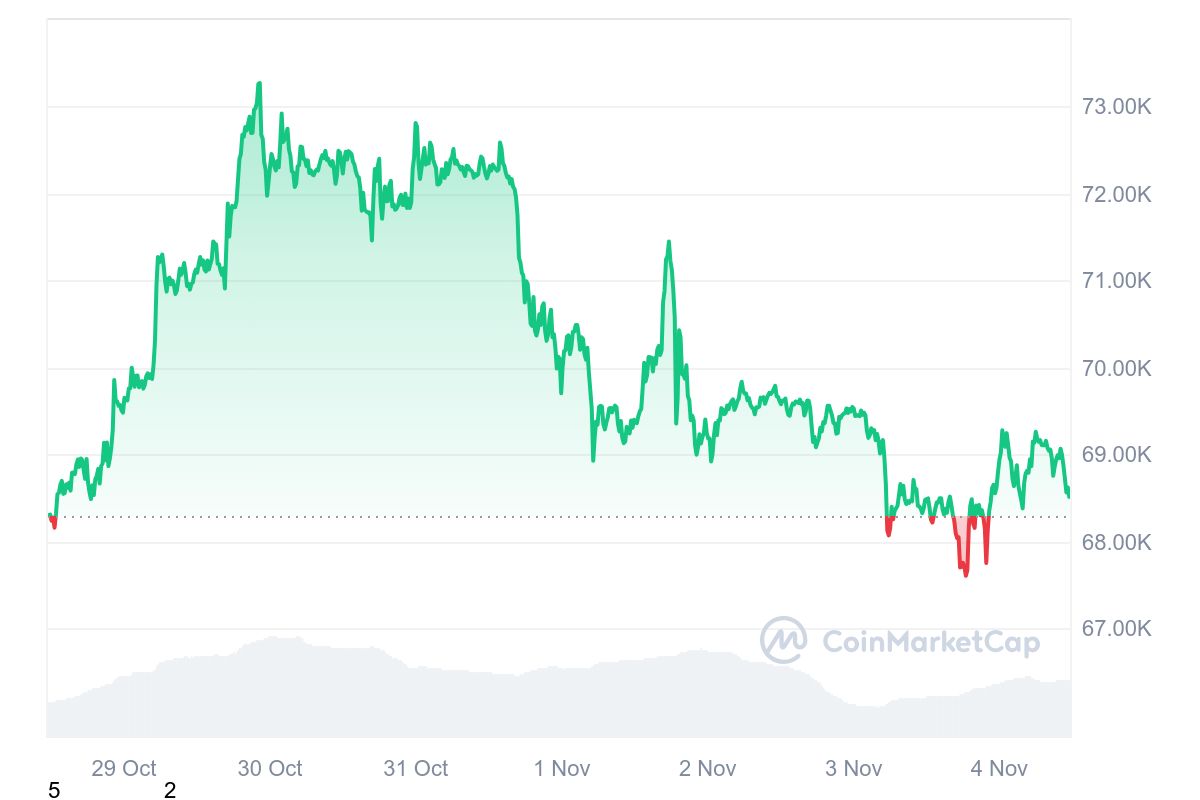Cryptocurrency traders expect significant volatility in Bitcoin’s (BTC) price due to the upcoming 2024 U.S. presidential election. Based on options trading on Deribit dated November 6, an annual volatility rate of 112% suggests a potential movement of $4,000 for BTC. Greg Magadini, the derivatives director at Amberdata, anticipates a post-election price reaction in the range of +1.5-sigma (between $6,000 and $8,000). Such fluctuations may resemble the volatility seen from risk-based movements in early August.
Anticipated Fluctuations in BTC and ETH Prices
Bitcoin  $92,441 experienced a significant value loss during the summer due to diminished risk appetite, and investors expect a similar scenario in this election. The close results in key states during the U.S. elections could further amplify price movements.
$92,441 experienced a significant value loss during the summer due to diminished risk appetite, and investors expect a similar scenario in this election. The close results in key states during the U.S. elections could further amplify price movements.
Magadini predicts that the contest between Republican Donald Trump and Democrat Kamala Harris will generate volatility at the 1.5-sigma level. While markets do not anticipate any surprises regardless of the election outcome, investors are preparing for potential fluctuations at the 1.5-sigma level, whereas extreme volatility at the 3-sigma level seems unlikely.
Higher Volatility Predictions for Ethereum
Ethereum (ETH)  $3,318, the second-largest cryptocurrency by market capitalization, follows a similar trend. On-chain data indicates that Ethereum may experience higher volatility compared to Bitcoin. According to options traded on the decentralized exchange Derive, ETH’s price is projected to fluctuate between 9.35% and 10.19% following the election.
$3,318, the second-largest cryptocurrency by market capitalization, follows a similar trend. On-chain data indicates that Ethereum may experience higher volatility compared to Bitcoin. According to options traded on the decentralized exchange Derive, ETH’s price is projected to fluctuate between 9.35% and 10.19% following the election.

Given ETH’s current trading price of $2,470, a 10% volatility translates to a $247 movement. In contrast, a similar percentage for BTC corresponds to a price change of $6,800.
DEX (decentralized exchange) investors also expect upward volatility for ETH. As of Sunday, the total open interest for call options reached 1,179 contracts, while put options remained at 885 contracts. Nick Forster, the founder of Derive, noted that as the election approaches, investors are taking more precautions against market volatility, illustrating the strategic importance of on-chain options.










